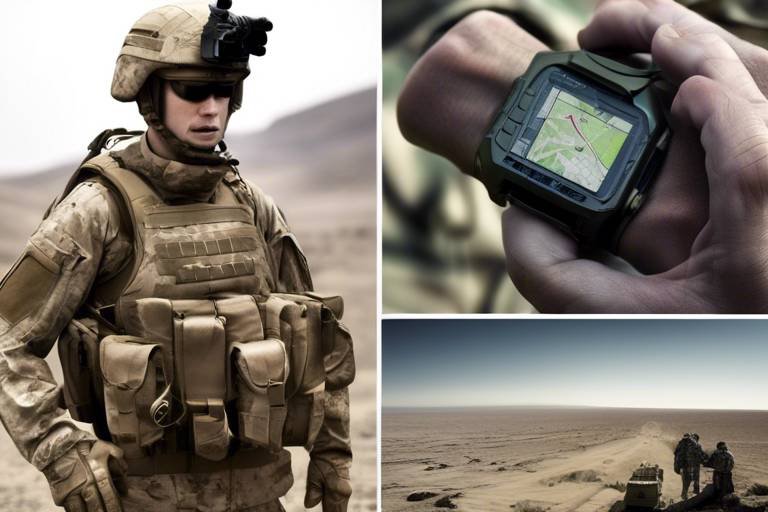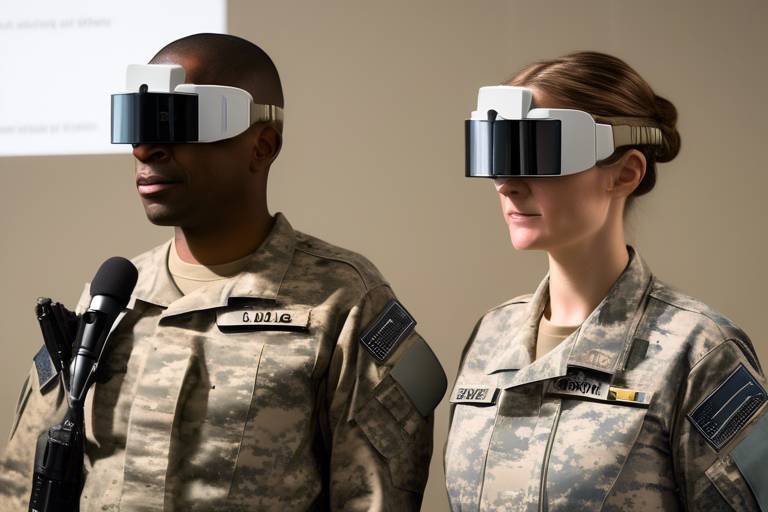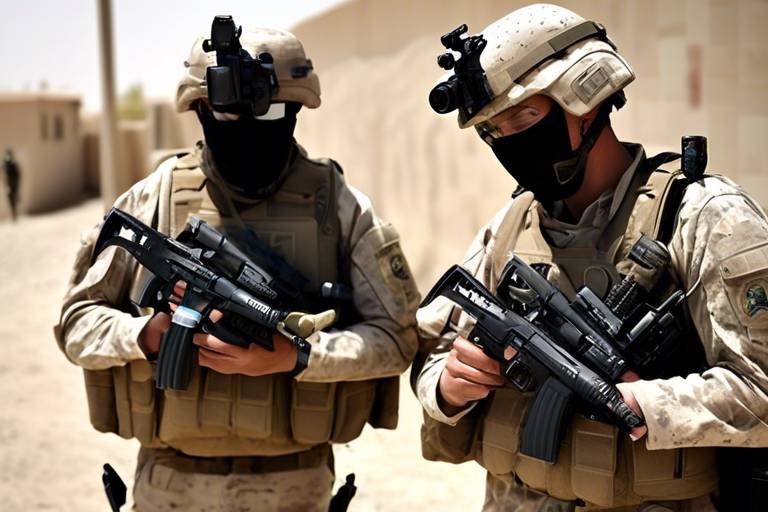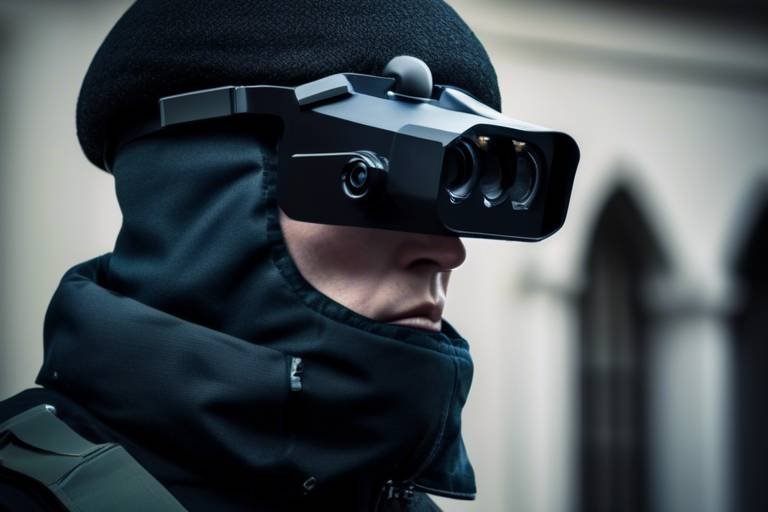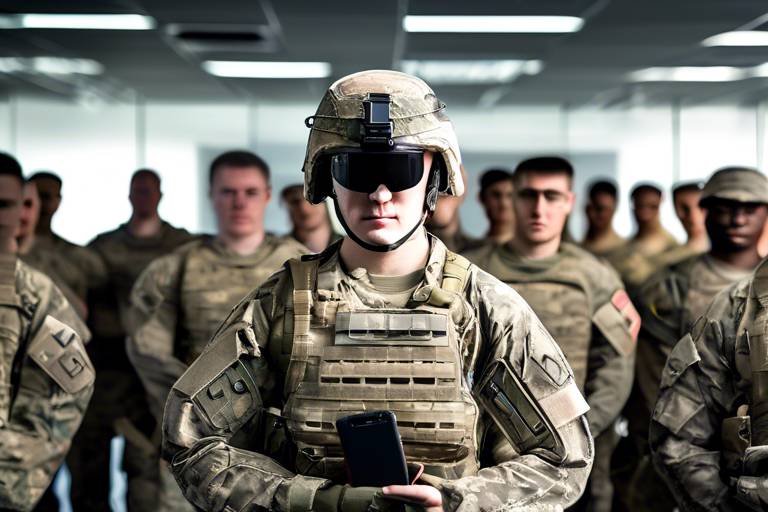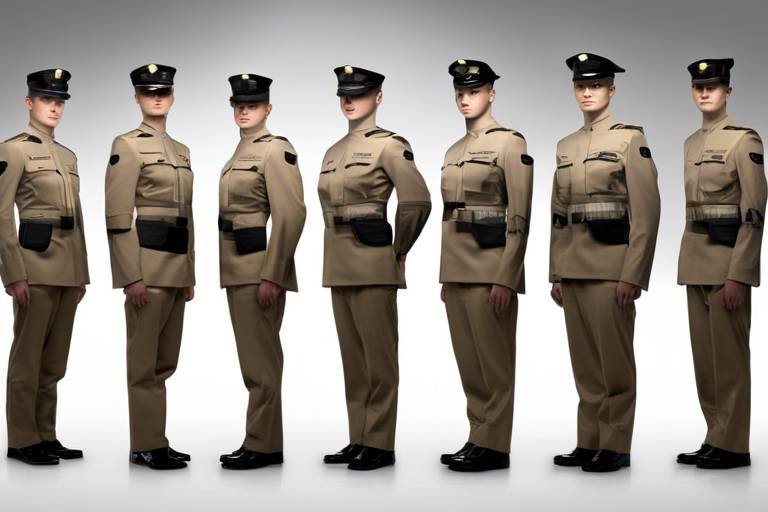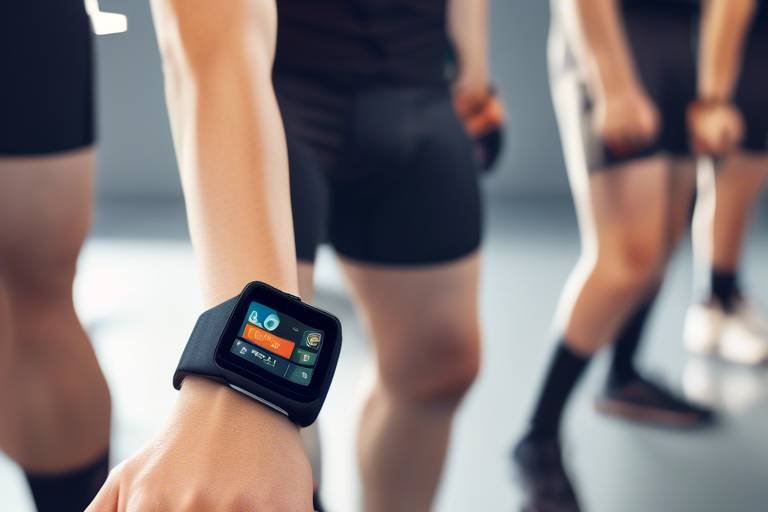The Integration of GPS into Wearable Military Tech
The world of military technology is evolving at an astonishing pace, and one of the most significant advancements has been the integration of GPS technology into wearable devices. Imagine a soldier on the battlefield, equipped with a device that not only tracks their location but also enhances their operational capabilities. This is not science fiction; it’s the reality of modern warfare. By seamlessly blending GPS with wearable tech, military personnel can navigate unfamiliar terrains, communicate effectively, and maintain situational awareness like never before. In this article, we will delve into how GPS enhances these critical areas, transforming the way soldiers operate in the field.
When it comes to military operations, navigation accuracy is paramount. GPS integration significantly improves the ability of military personnel to track their locations and plan their routes. Consider a soldier maneuvering through dense forests or urban landscapes; with GPS, they can pinpoint their exact location and receive real-time updates on their surroundings. This capability is crucial during missions in unfamiliar terrains where traditional maps and compasses may fall short. The precision offered by GPS allows troops to avoid hazards, reach their objectives more efficiently, and ultimately, increase mission success rates.
Effective communication can mean the difference between success and failure in military operations. Wearable military tech equipped with GPS plays a vital role in enhancing communication among troops. Imagine a unit spread across a wide area, each member equipped with a GPS-enabled device. They can share their real-time positions and movements with each other, creating a cohesive operational picture. This not only improves coordination during operations but also fosters a sense of unity among soldiers, knowing that they are all connected and aware of each other's locations.
One of the standout features of GPS-equipped wearables is the ability for units to share their locations in real-time. This capability is invaluable for maintaining situational awareness. By knowing where each member of a unit is located, the risk of friendly fire is significantly reduced. Picture a chaotic battlefield scenario; in the heat of the moment, the last thing anyone wants is to accidentally target their own. Real-time location sharing ensures that troops can make informed decisions based on the actual positions of their comrades, enhancing overall mission effectiveness.
In emergency situations, every second counts. GPS technology is a game-changer when it comes to coordinating responses to soldiers in distress. If a soldier is injured or trapped, their GPS-enabled wearable can pinpoint their exact location, allowing medics and support teams to reach them quickly and efficiently. This rapid response capability can be the difference between life and death, underscoring the importance of GPS in modern military applications.
Another remarkable aspect of GPS integration is the ability to feed data back to command centers. GPS data from wearables can be integrated with sophisticated command center systems, providing commanders with live updates on troop movements and status. This real-time information is crucial for strategic decision-making, allowing leaders to allocate resources effectively and respond to changing battlefield dynamics. The synergy between wearable tech and command centers creates a more agile and responsive military force.
Beyond navigation and communication, GPS-equipped wearables can also monitor soldiers' health metrics and performance. Imagine a scenario where a soldier is pushing their limits during a mission; their wearable can track vital signs, fatigue levels, and other health indicators. This data is not just for monitoring; it ensures that soldiers remain fit for duty and can be quickly located if they experience health issues. This proactive approach to soldier wellness is essential in maintaining a strong and capable military force.
Despite the numerous advantages of integrating GPS into military wearables, there are challenges that must be addressed. Issues such as signal interference, battery life concerns, and the need for secure data transmission pose significant hurdles that need to be overcome for optimal functionality.
Environmental factors, such as dense foliage or urban structures, can interfere with GPS signals. Moreover, enemy jamming can pose a serious risk, disrupting navigation and communication. This highlights the need for robust solutions that can mitigate these issues, ensuring that soldiers can rely on their devices even in challenging conditions.
Another challenge is battery life. Continuous GPS tracking consumes power, and military wearables must be optimized for energy efficiency without compromising functionality. The quest for longer-lasting batteries is ongoing, as developers strive to create devices that can support the demands of modern warfare.
- What are the primary benefits of GPS in military wearables? GPS enhances navigation accuracy, improves communication, and aids in health monitoring for soldiers.
- Can GPS signals be disrupted on the battlefield? Yes, environmental factors and enemy jamming can interfere with GPS signals, posing challenges for military operations.
- How does GPS improve emergency response for soldiers? GPS allows for quick location pinpointing, enabling rapid response from medics and support teams in emergencies.
Enhancing Navigation Accuracy
In the unpredictable realm of military operations, where every second counts and even a minor misstep can have significant consequences, GPS integration emerges as a game-changer. Imagine a soldier navigating through dense forests or urban landscapes, equipped with a device that not only tells them where they are but also guides them to their destination with pinpoint precision. This is the power of GPS technology in wearable military devices, transforming the way troops operate in unfamiliar terrains.
The ability to achieve exceptional navigation accuracy is crucial for military personnel. With the integration of GPS, soldiers can track their exact location in real-time, which is vital during complex missions. Gone are the days of relying solely on maps and compasses; now, with a few taps on their wearable devices, soldiers can receive instant updates on their location and the best possible routes to their objectives. This level of accuracy not only enhances operational efficiency but also significantly reduces the chances of getting lost or disoriented in hostile environments.
Moreover, the real-time data provided by GPS allows soldiers to plan their routes effectively. For instance, they can avoid potential ambush sites or hazardous areas based on live intelligence updates. This proactive approach to navigation can mean the difference between success and failure in critical missions. Additionally, GPS technology can be paired with other navigational aids, such as digital maps and augmented reality, to create a comprehensive situational awareness platform.
To illustrate the impact of GPS on navigation, consider the following table that highlights the key benefits:
| Benefit | Description |
|---|---|
| Precise Location Tracking | Enables soldiers to know their exact coordinates at all times, reducing disorientation. |
| Route Optimization | Calculates the most efficient paths, avoiding obstacles and enemy positions. |
| Real-Time Updates | Provides live data on troop movements and environmental changes. |
| Integration with Other Systems | Works alongside other technologies for enhanced situational awareness. |
In addition to these benefits, the integration of GPS into military wearables fosters team cohesion. Soldiers can share their locations with fellow troops, ensuring that everyone is on the same page during operations. This collaboration is particularly essential in fast-paced scenarios, where communication is key to survival and success. Imagine a unit moving through enemy territory; with GPS, they can coordinate their movements seamlessly, reducing the risk of friendly fire and enhancing overall mission effectiveness.
In conclusion, the integration of GPS technology into wearable military devices significantly enhances navigation accuracy. This advancement not only empowers soldiers to navigate with confidence but also ensures that they can adapt to the ever-changing dynamics of the battlefield. As technology continues to evolve, the potential for even greater improvements in navigation and operational effectiveness is limitless.
Improving Communication Systems
When we think about the battlefield, the first images that often come to mind are those of soldiers in combat, but what truly makes a difference in their effectiveness is the communication systems that support them. The integration of GPS technology into wearable military devices has revolutionized how troops communicate and coordinate during operations. Imagine being in a complex, ever-changing environment where every second counts; having accurate, real-time communication can mean the difference between success and failure.
With GPS-equipped wearables, soldiers can share their locations instantly, allowing for seamless communication between units. This capability not only enhances teamwork but also builds a stronger sense of situational awareness. For instance, if one unit encounters unexpected resistance, they can quickly relay their position and status to nearby units, enabling a coordinated response. It's like having a live map that updates in real-time, giving everyone a clear picture of the battlefield.
Moreover, the ability to communicate positions and movements in real-time reduces the risk of friendly fire. When troops are aware of each other's exact locations, they can make informed decisions about their movements, avoiding potentially dangerous situations. This is crucial in high-stakes environments where the fog of war can lead to tragic mistakes. As a result, GPS technology not only enhances operational efficiency but also saves lives.
In addition to location sharing, GPS integration also supports advanced communication systems that allow for voice and data transmission. This means soldiers can send messages or receive orders without needing a separate device. Imagine a soldier on the ground who can communicate directly with their command center while simultaneously receiving updates on troop movements—all from their wrist. This level of integration is not just convenient; it’s essential for maintaining the flow of information in fast-paced situations.
However, the benefits of improved communication systems through GPS don’t stop at the individual soldier level. Commanders can monitor troop movements in real-time, allowing them to make strategic decisions based on current conditions. This integration of data creates a comprehensive view of the battlefield, enabling better planning and execution of missions. It's like being able to see the entire chessboard while playing a game, giving commanders the upper hand in every situation.
In summary, the integration of GPS technology into wearable military devices is a game-changer for communication systems. It enhances teamwork, improves situational awareness, reduces the risk of friendly fire, and provides commanders with critical information to make informed decisions. As technology continues to evolve, we can only anticipate even greater advancements in how soldiers communicate and operate on the battlefield.
- How does GPS improve communication among troops? GPS allows for real-time location sharing, enhancing situational awareness and coordination between units.
- What are the risks associated with GPS in military communications? Risks include signal interference, which can disrupt navigation and communication, and the potential for friendly fire if positions are not accurately communicated.
- Can GPS wearables transmit voice communication? Yes, many GPS-equipped wearables are designed to support voice and data transmission, allowing for seamless communication.
- How does GPS data assist commanders? GPS data provides commanders with live updates on troop movements, enabling better strategic decision-making during missions.
Real-Time Location Sharing
Imagine being on a battlefield where every second counts. In such high-stakes environments, through GPS-equipped wearables becomes a game changer. This technology allows soldiers to communicate their exact positions instantly, ensuring that everyone on the team is aware of each other's movements. Think of it like a live map that updates every moment, helping to create a cohesive unit even in the chaos of war.
The advantages of real-time location sharing are profound. When troops are scattered across unfamiliar terrain, having access to each other's locations can drastically reduce the chances of friendly fire. In fact, studies have shown that units utilizing GPS technology experience a significant decrease in accidental engagements. This is not just about safety; it’s also about enhancing mission effectiveness. When soldiers know where their comrades are, they can coordinate their actions better, leading to more successful operations.
Moreover, real-time location sharing aids in emergency response coordination. If a soldier is injured or in distress, their exact location can be pinpointed rapidly, allowing medics or support units to reach them without delay. This capability can mean the difference between life and death in critical situations. The ability to send out a distress signal that includes precise coordinates ensures that help is dispatched swiftly and accurately, minimizing the time spent in vulnerable positions.
To illustrate the importance of this technology, consider a scenario where a squad is ambushed. The ability to share real-time locations allows for quick reassessment of the situation. Leaders can see where each soldier is, identify who is in the line of fire, and make informed decisions on how to respond. This level of situational awareness is invaluable and can often lead to a more favorable outcome.
Furthermore, the integration of real-time location sharing into command centers enhances the overall strategic planning of military operations. Commanders can receive live updates on troop movements, allowing them to adjust tactics on the fly. This dynamic flow of information creates a more adaptable and responsive military force, capable of overcoming unexpected challenges.
In summary, real-time location sharing through GPS technology is not just an enhancement; it’s a necessity in modern warfare. It fosters improved communication, enhances safety, and ultimately leads to greater operational success. As military technology continues to evolve, the importance of integrating such systems into wearable devices will only grow.
- What are the primary benefits of real-time location sharing in military operations? Real-time location sharing enhances communication, reduces the risk of friendly fire, and improves emergency response coordination.
- How does GPS technology improve situational awareness for soldiers? GPS technology provides live updates on troop movements, allowing soldiers to remain aware of their surroundings and the positions of their comrades.
- What challenges does real-time location sharing face? Challenges include signal interference, battery life concerns, and ensuring secure data transmission to protect sensitive information.
Emergency Response Coordination
When it comes to the battlefield, every second counts. Imagine a scenario where a soldier is injured, and every moment spent waiting for help could mean the difference between life and death. This is where the integration of GPS technology into wearable military devices truly shines. With precise location tracking, these devices can pinpoint a soldier's exact coordinates, ensuring that emergency responders can reach them without delay. It's akin to having a lifeline that not only keeps soldiers connected but also guides help directly to them, no matter how chaotic the situation may be.
In emergencies, the ability to coordinate responses effectively is critical. GPS-equipped wearables can transmit the soldier's location in real-time to command centers, allowing for a swift and organized response. Commanders can assess the situation and deploy resources efficiently, ensuring that medical personnel are dispatched to the right location without wasting precious time. This capability is particularly vital in complex environments where traditional communication methods may fail or become unreliable.
Moreover, the integration of GPS data into emergency response systems can facilitate a more comprehensive approach to managing crises. For instance, command centers can use a live map interface that displays the positions of all troops in the vicinity, highlighting those in need of urgent assistance. This not only aids in directing help but also enhances overall situational awareness for all units involved. In essence, GPS technology transforms how military operations are conducted during emergencies, making them more effective and timely.
To illustrate the impact of GPS in emergency response coordination, consider the following table that outlines the key benefits:
| Benefit | Description |
|---|---|
| Real-Time Tracking | Allows for immediate identification of a soldier's location, facilitating faster response times. |
| Enhanced Communication | Enables seamless communication between soldiers and command centers, improving coordination during crises. |
| Resource Allocation | Helps commanders allocate medical and logistical resources effectively based on real-time data. |
| Situational Awareness | Provides a comprehensive view of the battlefield, allowing for informed decision-making in emergencies. |
In conclusion, the integration of GPS technology into wearable military devices is revolutionizing emergency response coordination. By ensuring that soldiers can be located quickly and accurately, it enhances the effectiveness of medical responses and ultimately saves lives. This technology not only empowers soldiers but also strengthens the entire military operation, making it a crucial component of modern warfare.
- How does GPS improve military operations? GPS enhances navigation, communication, and situational awareness for soldiers on the battlefield.
- What are the main challenges of using GPS in military wearables? The challenges include signal interference, battery life concerns, and the need for secure data transmission.
- Can GPS work in all environments? GPS can face challenges in environments with heavy obstructions or enemy jamming, which can affect signal quality.
Data Integration with Command Centers
In the fast-paced world of military operations, the ability to make informed decisions quickly can mean the difference between success and failure. This is where comes into play. By utilizing GPS data from wearable devices, military command centers can receive real-time updates on troop movements and statuses, allowing for a comprehensive overview of the battlefield. Imagine being able to see not just where your troops are, but also how they are performing, all on a single screen. This capability transforms the way commanders strategize and execute missions.
One of the most significant advantages of this integration is the enhanced situational awareness it provides. Commanders can visualize the battlefield in real-time, making it easier to identify potential threats and opportunities. For instance, if a unit encounters unexpected resistance, the command center can quickly redirect nearby forces to provide support, ensuring a coordinated response that maximizes effectiveness and minimizes risk.
Moreover, the integration of GPS data helps streamline communication between soldiers and command centers. With wearables sending continuous updates on location and health metrics, commanders can monitor the well-being of their troops without needing constant verbal reports. This not only reduces the communication load on soldiers, allowing them to focus on their missions, but also ensures that help can be dispatched promptly if an issue arises.
To further illustrate the impact of this integration, consider the following table that highlights the key benefits:
| Benefit | Description |
|---|---|
| Real-Time Updates | Commanders receive live information on troop movements, enabling swift decision-making. |
| Enhanced Coordination | Units can be quickly redirected based on evolving battlefield conditions. |
| Health Monitoring | Continuous tracking of soldiers' health ensures timely medical assistance when needed. |
As we delve deeper into the complexities of military operations, it becomes increasingly clear that the integration of GPS data into command centers is not just a technological upgrade; it is a fundamental shift in how military forces operate. By leveraging this technology, military leaders can make more informed decisions, enhance troop safety, and ultimately improve mission outcomes. The future of military operations is undoubtedly tied to the effective use of data, and GPS integration is at the forefront of this evolution.
- What is the primary benefit of GPS integration in military wearables?
GPS integration allows for real-time tracking and communication, enhancing situational awareness and operational efficiency. - How does GPS data improve decision-making in command centers?
It provides commanders with live updates on troop movements and health metrics, enabling swift and informed decisions. - What challenges does GPS technology face in military applications?
Challenges include signal interference, battery life concerns, and the need for secure data transmission.
Tracking Soldier Health and Performance
In the high-stakes environment of the battlefield, the health and performance of soldiers are paramount. Wearable devices integrated with GPS technology play a crucial role in monitoring these vital metrics. Imagine a scenario where a soldier is engaged in a strenuous operation, navigating through rough terrain under extreme conditions. With GPS-enabled wearables, commanders can track not just the soldier's location but also their physical condition in real-time. This capability transforms traditional health monitoring from a reactive to a proactive approach.
These devices can continuously collect data on various health parameters, such as heart rate, body temperature, and even hydration levels. By analyzing this data, military personnel can ensure that soldiers are operating within safe limits, thereby reducing the risk of heat exhaustion or other health issues that could compromise their effectiveness. For instance, if a soldier's heart rate spikes beyond a certain threshold, an alert can be sent to medics, allowing for immediate intervention. This is akin to having a personal health assistant right on the battlefield, ensuring that every soldier remains fit for duty.
Moreover, the integration of performance metrics allows for a comprehensive understanding of a soldier's physical capabilities. By tracking metrics such as distance traveled, speed, and even recovery times, military leaders can make informed decisions regarding troop assignments and rotations. This data-driven approach ensures that soldiers are not only physically prepared but also mentally equipped to handle the demands of their missions. In essence, GPS technology in wearables not only enhances operational effectiveness but also prioritizes the well-being of soldiers, which is crucial for maintaining morale and readiness.
To illustrate the impact of these advancements, consider the following table that outlines some key health metrics monitored by GPS-enabled wearables:
| Health Metric | Description | Importance |
|---|---|---|
| Heart Rate | Measures the number of heartbeats per minute. | Indicates physical exertion and stress levels. |
| Body Temperature | Tracks the soldier's core temperature. | Helps identify heat-related illnesses. |
| Hydration Levels | Monitors fluid balance in the body. | Prevents dehydration during intense activities. |
| Distance Traveled | Calculates the distance covered during operations. | Assesses physical endurance and effectiveness. |
In conclusion, the integration of GPS technology into wearable devices not only enhances navigation and communication but also revolutionizes how we monitor soldier health and performance. By leveraging real-time data, military leaders can ensure that their troops are not only well-equipped but also in optimal condition to face the challenges of the battlefield.
- How does GPS technology improve soldier safety?
GPS technology enhances soldier safety by providing real-time location tracking, reducing the risk of friendly fire, and enabling quick emergency responses. - Can GPS devices work in all environments?
While GPS devices are generally reliable, they can face challenges in urban canyons or dense forests where signals may be obstructed. - What kind of data can wearable devices collect?
Wearable devices can collect data on health metrics such as heart rate, body temperature, hydration levels, and physical activity. - How does data from wearables benefit military operations?
Data from wearables allows commanders to make informed decisions about troop movements, health management, and overall mission effectiveness.
Challenges of GPS in Military Wearables
While the integration of GPS technology into military wearables brings numerous advantages, it also presents a range of challenges that must be addressed to ensure optimal functionality on the battlefield. One of the most significant challenges is signal interference. Environmental factors such as dense urban areas, thick forests, or mountainous terrains can obstruct GPS signals, making it difficult for soldiers to receive accurate location data. Moreover, the threat of enemy jamming adds another layer of complexity, as adversaries may attempt to disrupt GPS signals intentionally, leading to potential navigation errors and communication breakdowns.
Another critical issue is battery life. Continuous GPS tracking can drain the battery of wearable devices quickly, which poses a substantial risk during prolonged missions. Soldiers need reliable power sources to ensure that their devices function throughout their operations. Therefore, manufacturers are tasked with developing wearables that not only incorporate GPS technology but also optimize energy efficiency without compromising performance. This challenge often leads to a trade-off between functionality and battery longevity.
Furthermore, the need for secure data transmission cannot be overstated. Military operations demand the utmost confidentiality, and any breach of sensitive information could jeopardize missions and endanger lives. As such, it is essential to implement robust encryption protocols to protect GPS data transmitted from wearables to command centers. This requirement adds another layer of complexity to the design and functionality of these devices, necessitating advanced technological solutions.
In summary, while GPS technology enhances military wearables significantly, addressing challenges such as signal interference, battery life, and secure data transmission is crucial. Overcoming these obstacles will ensure that soldiers can rely on their devices for accurate navigation, effective communication, and overall mission success.
- What are the main challenges of GPS in military wearables?
Signal interference, battery life concerns, and the need for secure data transmission are the primary challenges faced. - How does signal interference affect military operations?
Signal interference can lead to navigation errors and communication breakdowns, which can compromise mission success. - Why is battery life a concern for military wearables?
Continuous GPS tracking consumes power, and soldiers need reliable devices that last throughout their operations. - How is data security maintained in military wearables?
Robust encryption protocols are essential to protect sensitive GPS data from unauthorized access.
Signal Interference Issues
When it comes to military operations, the reliability of GPS technology is paramount. However, signal interference presents a significant challenge that can jeopardize the effectiveness of wearable military tech. Imagine a soldier navigating through a dense forest or urban environment, relying on their GPS device to guide them. Suddenly, the signal drops or becomes unreliable due to environmental factors or enemy interference. This scenario can lead to disorientation, miscommunication, and potentially disastrous outcomes.
Environmental factors such as tall buildings, dense foliage, and rugged terrain can obstruct GPS signals, making it difficult for soldiers to maintain accurate positioning. Additionally, enemy jamming techniques can disrupt GPS signals intentionally, creating a tactical disadvantage. These challenges necessitate the development of advanced solutions to ensure that soldiers can rely on their GPS devices even in the most demanding conditions.
To combat these issues, military tech developers are exploring a variety of strategies, including:
- Multi-constellation GNSS: Utilizing signals from multiple satellite systems (like GPS, GLONASS, Galileo, and BeiDou) can enhance signal reliability.
- Advanced Antenna Design: Developing antennas that are less susceptible to interference can significantly improve performance in challenging environments.
- Signal Processing Techniques: Implementing sophisticated algorithms to filter out noise and enhance signal clarity can help maintain accurate location tracking.
As the military continues to innovate, addressing signal interference issues will be crucial for the successful integration of GPS into wearable technology. Ensuring that soldiers have access to reliable navigation tools not only enhances their safety but also improves overall mission success rates. In an age where technology is advancing rapidly, the military must stay one step ahead of potential threats that could compromise their operations.
- What causes GPS signal interference?
GPS signal interference can be caused by environmental factors such as buildings, trees, and weather conditions, as well as intentional jamming by adversaries. - How can military personnel mitigate GPS signal issues?
Military personnel can mitigate GPS signal issues by using multi-constellation GNSS systems, advanced antennas, and sophisticated signal processing techniques. - Why is GPS important for military operations?
GPS is crucial for military operations as it enhances navigation accuracy, improves communication, and increases situational awareness for soldiers on the battlefield.
Battery Life Concerns
This article explores how GPS technology enhances the functionality of wearable devices in military applications, improving navigation, communication, and situational awareness for soldiers on the battlefield.
GPS integration significantly improves navigation accuracy for military personnel, enabling precise location tracking and route planning, which are crucial during missions in unfamiliar terrains.
Wearable military tech equipped with GPS facilitates better communication among troops, allowing for real-time updates on positions and movements, thus enhancing coordination during operations.
Real-time location sharing through GPS-equipped wearables allows units to maintain situational awareness, reducing the risk of friendly fire and improving overall mission effectiveness.
In emergencies, GPS technology aids in coordinating responses, ensuring that help reaches soldiers in distress quickly and efficiently by pinpointing their exact location.
GPS data from wearables can be integrated with command center systems, providing commanders with live updates on troop movements and status, enhancing strategic decision-making.
Wearable devices equipped with GPS can monitor soldiers' health metrics and performance, ensuring they remain fit for duty and can be quickly located if they experience health issues.
Despite its advantages, integrating GPS into military wearables presents challenges, including signal interference, battery life concerns, and the need for secure data transmission to protect sensitive information.
Environmental factors and enemy jamming can interfere with GPS signals, posing risks to navigation and communication, necessitating the development of robust solutions to mitigate these issues.
The reliance on GPS technology in military wearables raises significant concerns about battery life. Continuous tracking and data transmission can drain power quickly, which is a critical issue when every moment counts on the battlefield. Imagine being in a critical situation, relying on your device to guide you, only to find that it has run out of juice. This scenario is not just inconvenient; it could be life-threatening.
To address the battery life dilemma, manufacturers are exploring several innovative solutions:
- Energy-Efficient Technologies: Incorporating low-power GPS chips that consume less energy while still providing accurate location data.
- Smart Power Management: Developing software that intelligently manages power consumption based on the wearer's activity level and mission requirements.
- Alternative Power Sources: Integrating solar panels or kinetic energy converters within the wearables to supplement battery life during extended missions.
Furthermore, ongoing research aims to enhance battery technology itself, focusing on creating lighter, more efficient batteries that can hold more charge without adding significant weight to the device. The challenge lies in balancing functionality with power consumption. If a device offers a plethora of features but cannot last through a mission, it defeats the purpose of having it in the first place.
Ultimately, addressing battery life concerns is not just about improving technology; it's about ensuring the safety and efficiency of soldiers in the field. As advancements continue, we can hope for a future where military wearables are both powerful and enduring.
- What are the main benefits of GPS in military wearables? GPS enhances navigation, communication, and situational awareness, which are critical for mission success.
- How does GPS improve soldier safety? By enabling real-time location sharing, GPS reduces the risk of friendly fire and helps coordinate emergency responses.
- What challenges do military wearables face regarding GPS? Key challenges include signal interference, battery life concerns, and the need for secure data transmission.
Frequently Asked Questions
- How does GPS improve navigation for soldiers?
GPS technology enhances navigation accuracy by providing precise location tracking and route planning. This is especially crucial for military personnel operating in unfamiliar terrains, allowing them to navigate effectively and complete missions successfully.
- What role does GPS play in communication among troops?
Wearable military tech equipped with GPS facilitates real-time updates on positions and movements. This improved communication enhances coordination during operations, ensuring that troops are always aware of each other's locations and can act swiftly.
- Can GPS-equipped wearables help in emergency situations?
Absolutely! In emergencies, GPS technology aids in coordinating responses by pinpointing soldiers' exact locations. This ensures that help can reach them quickly and efficiently, which is vital for their safety and mission success.
- How is health and performance monitored using GPS technology?
Wearable devices with GPS capabilities can track soldiers' health metrics and performance levels. By monitoring these factors, military personnel can ensure they remain fit for duty and can be quickly located if they encounter health issues.
- What challenges does GPS integration face in military applications?
Despite its benefits, GPS integration in military wearables faces challenges such as signal interference, battery life concerns, and the need for secure data transmission. These issues require robust solutions to ensure reliable operation in the field.
- How does signal interference affect GPS functionality?
Environmental factors and enemy jamming can interfere with GPS signals, which poses risks to navigation and communication. This necessitates the development of advanced technologies to mitigate these signal interference issues.
- What are the battery life concerns associated with GPS wearables?
Continuous GPS tracking can drain battery life, raising concerns about how long devices can operate in the field. It’s essential to optimize energy efficiency without compromising the functionality of these wearables.

